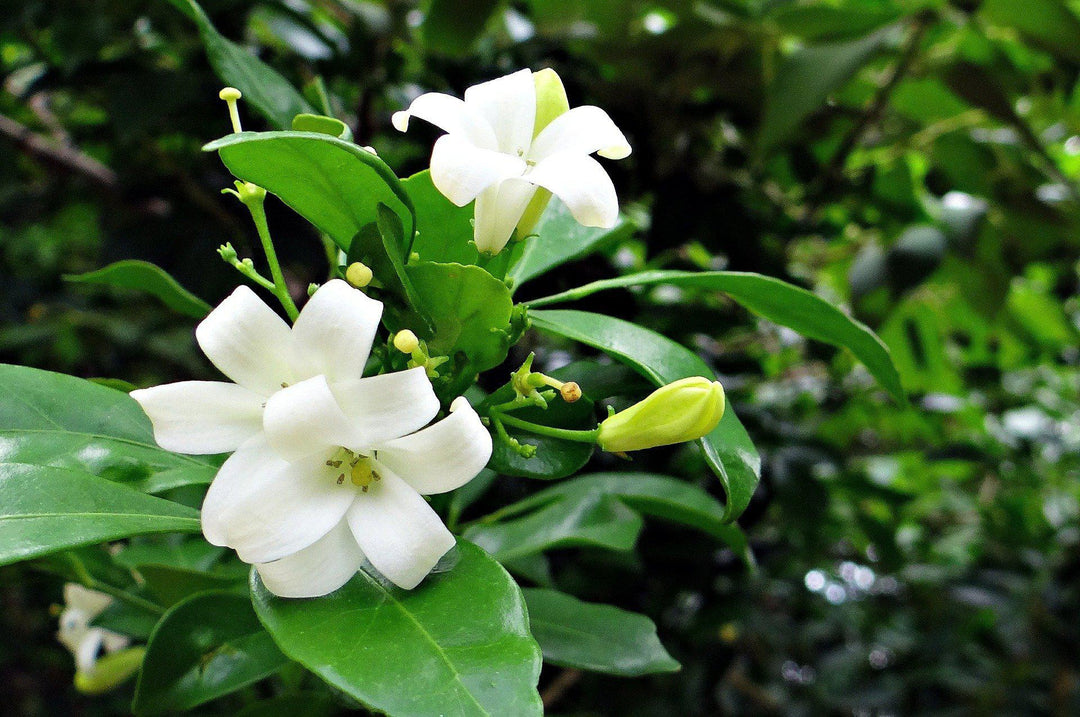
How To Take Care Of Your Orange Jasmine Bonsai Tree
Murraya Paniculata Bonsai Care
About The Orange Jasmine Bonsai Tree
The orange jasmine is a species of flowering plant in the Rue family, which is native to eastern and South Asia, Southeast Asia and Australia.
This jasmine is a fragrant evergreen with smooth bark.
It has shiny dark leaves and fragrant flowers that resemble an orange blossom.
The flowers smell so pleasant, they are the base of many perfumes, teas, and even Thai jasmine rice.
The Orange Jasmine blooms throughout the year.
Placement
The orange jasmine is a tropical plant and will die if frozen. When the overnight low temperatures drop to 45 degrees, it's time to bring your bonsai indoors for the winter.
When the low temperatures are consistently above 45 degrees, feel free to bring you r bonsai back outside.
It loves light, and should get plenty of it on a south facing windowsill if possible.
Watering
The orange jasmine, like most bonsai trees, will die if it dries out. It enjoys plenty of water in well draining soil. Never let it dry out completely.
Humidity
The orange jasmine enjoys humidity in the drier months, and a suitable humidity drip tray will provide plenty.
Fertilizing
Since your orange jasmine bonsai is in a small pot, and not the ground, it needs nutrients. A slow release (pellet based) fertilizer is perfect for this, and can be added sparingly every 1-2 months during the growing season.
Pruning & Trimming
Trim back the new growth to the farthest safe point that looks good to you — but never remove all of the new growth.
A regular trim will help keep your orange jasmine bonsai tree short, while helping the trunk grow thicker.
Repotting
Repotting must be performed periodically on your bonsai, orange jasmine included, when its root system has filled the pot. If you can clearly see the roots coming out of the bottom of the pot, it’s time to repot your bonsai.
Generally, this means every 2-3 years for a deciduous tree and every 4-5 years for an evergreen. Orange jasmine, being an evergreen, will need to be repotted around every 4-5 years depending on its environment.
Repotting should be done in mid-summer, when the tree is at it’s least fragile state.
Your orange jasmine bonsai, along with all of its soil, should be removed from the pot. From there, you can trim away no more than 1/3rd of the root mass (1/4th is preferred.)
Then you can repot the tree in the same pot, or give it a newer / bigger pot to thrive in.
After repotting, your bonsai orange jasmine should be thoroughly watered.
Diseases, Insects & Other Pests
Your orange jasmine bonsai can be treated for pests like a normal orange jasmine plant. Just remember, your tree is miniature and will need a much smaller and more gentile dose of treatment.
Would you like to SEE these instructions as a series of videos, instead of just reading them?
If you want to demystify the art of bonsai so you can become a master of this relaxing hobby in just a few days, you need the right training. I’ve built a digital video course that mixes classroom style instructional videos with “over the shoulder” style training videos to make bonsai simple to understand, and easy to start.
In this digital video course, you'll discover:
- How to create a bonsai tree from scratch that will help you experience true inner-peace and calm.
- How to keep your tree collection alive and well so you can enjoy their benefits for a lifetime.
- How to shape your bonsai like a professional, allowing you to design it however you like.
- What bonsai tools you really need and how to use them so you’ll never buy a tool that you don’t need again.
- How to cultivate your own trees so you never have to buy another tree from a store again.
- How to use all of this to create your own bonsai collection so you enjoy this relaxing hobby for the rest of your life.


